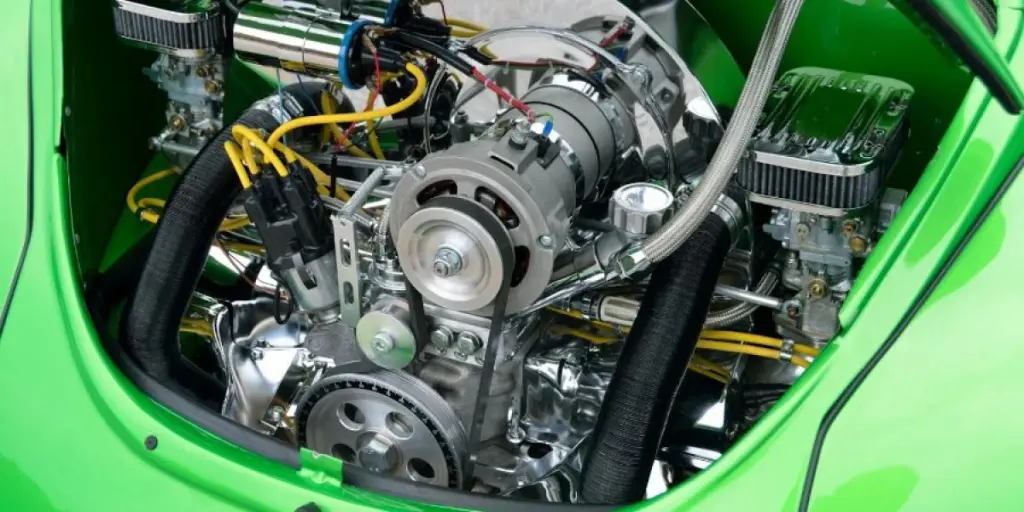Most Volkswagen models are known for reliability issues. So, if you are looking for a reliable Volkswagen engine, the EA888 is ideal with proper maintenance. Here are seven common problems of the Volkswagen EA888 engine and the signs that would help you spot them.
Table of Content
Seven common issues to watch out for with the EA888 engine
Wrapping up
Seven common issues to watch out for with the EA888 engine
Ignition coil breakdown
This is a common problem with most turbocharged engines. One of the integral components of every combustion engine is the ignition coil or coil pack. It alters the voltage from the battery to generate a spark in the spark plugs, which ignites the gasoline, resulting in combustion.
If an EA888 engine begins to misfire, the ignition coil could be faulty. And some reasons for this failure are;
- Inappropriate spark plug gap
- Worn-out spark plug ignition cable
- Valve covers leakage
- Moisture intrusion
Signs of a malfunctioning ignition coil
- Vehicle unable to start
- Illumination or flashing of the motor’s check engine light (engine management light)
- Misfire
- The quivering of the turbocharger at mid to high RPMs
- Stalling of engine
- Warm/cold rough idle
- Gas smell
Excessive use of oil
This issue usually affects the Gen 2 EA888 1.8 and 2.0 engines. It is the reason for the widespread negative reception of the EA888 engine. Excessive use of oil refers to the engine consuming more oil than the average operating range during normal conditions. If the issue is not fixed immediately, it may become frustrating and costly.
The cause of this problem is the thin piston rings Volkswagen manufactured for the engine. Here are signs to look out for:
Effects of excessive oil use
- Build up of oil in the engine or spark plug
- Exhaust releasing blue smoke
- Pieces of metal in the oil pan
- PCV valve failure
- Less oil in the engine compared to the period of driving
If these signs occur, take immediate action irrespective of the generation. Failure to do so can cause oil deposits, causing the engine to put more pressure on the remaining oil.
It is recommended to replace your PCV valve and see if it resolves the problem. If not, run a consumption test to confirm if the piston rings are the problem.
Leakage in the housing thermostat
Sadly, this is typical with EA888 engines, and the thermostat housing helps to control coolant flow.
Reasons for thermostat failure
- Faulty parts
- Typical wear and tear
- Overheating
- Sludge
Signs of a leaking thermostat housing
- Sudden stoppage of the engine due to a coolant leak
- Overheating of the engine
- Fluctuation of engine temperature readings
- Low coolant temperature lighting
- Leakage of coolant through the weep hole
Fortunately, it’s easy to replace the housing thermostat. But it’s crucial to run a pressure test to confirm the problem.
Water pump malfunction
The failure of a vehicle’s water pump is a common problem in modern transportation. A car owner may experience the breakdown of at least one of the water pumps during its lifespan. The health of a car depends on how well its water pump circulates water from the radiator throughout the cooling system and back to the radiator.
Symptoms of a malfunctioning water pump
- Overheating of the engine
- Intense engine noise
- Leaking of coolant (low coolant lighting)
- Release of a plume of steam from the radiator
- Build up of gunk on the water pump
Further, if the water pump fails, it’s best to replace it.
Intake valve carbon buildup
Most recent direct injection vehicles have a reoccurring problem with carbon buildup. When an engine consumes fuel, there’s usually carbon on the intake valves. And it restricts airflow.
Signs of intake valve carbon buildup
- Inefficiency in the use of fuel
- Knocking of engine
- Unable to start when cold
How to prevent intake valve carbon buildup
- Maintain a high RPM over a long period (25-23 minutes at 3000+ RPM)
- Use premium gasoline (93+ octane)
- Clean the valves often manually
If your vehicle has done 45,000+ miles check the intake valves. If there’s a build-up, clean the valves.
Strained timing chain
One of the prominent problems of the 2.0t Volkswagen EA888 Gen1 and Gen2 engines is the stretched-out timing chain. A timing chain links the crankshaft to the camshaft and ensures it rotates at the same rate as the engine. So if it breaks down, the vehicle won’t start.
Signs of a strained timing chain
- The vehicle’s check engine (engine management light) turns on
- Error codes P0506, POOOA, P0341, P0542A, P0011, or P0016.
- Engine starts to skip a gear
- The timing chain goes above the maximum range of 126mm (5 in.)
- Vehicle unable to start
- Pieces of metals in the engine oil
Powerless positive crankcase ventilation (PCV) valve
The PCV valves for Volkswagen are typically unreliable. And this issue is most common in turbocharged engines. This component helps to regulate a vehicle’s transmission, and it has other names, like a crankcase ventilation valve, a breather valve, or an oil separator.
Signs of a weak PCV valve
- Misfires due to air leaks
- Lean system code P0171
- Leakage of oil/more oil use
- Slow power
- ineffective regulation code
- The engine starts to make a loud whining noise
A PCV replacement is not difficult for a DIYers that know their way around engines. While at it, we recommend buying the kit.
Wrapping up
The common problems of the Volkswagen EA888 engine is avoidable if serviced properly at the right time. While at it, use premium fuel and oil to boost the engine performance. With all these in place, an EA888 engine can run up to 200,000 miles without fault.




